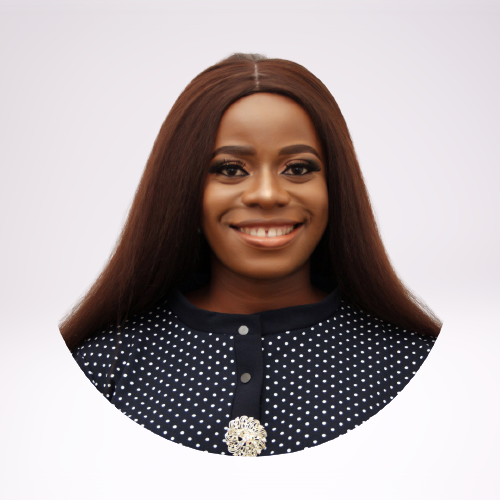|
Getting your Trinity Audio player ready...
|
A content marketing strategy is a plan for creating and distributing valuable, relevant, and consistent content to attract and retain a specific target audience and drive profitable customer action.
A content marketing strategy allows a business to create high-quality content that can be shared across multiple channels. This can build brand awareness and establish the brand as a thought leader in the industry. Which in turn, can lead to increased credibility and trust with potential customers.
What are the Pillars of Content Marketing?

The pillars of content marketing are the fundamental elements that support and define a successful content marketing ssystem. These pillars include:
1. Relevance
Your content must be relevant because relevance is a key factor in engaging and retaining your target audience. When content is relevant to your audience, it meets their needs and interests, and it resonates with them. This, in turn, helps build trust and credibility with your audience and increases their likelihood of taking the desired action, such as making a purchase or becoming a loyal customer.
Relevant content also helps you differentiate your brand and stand out in a crowded market. By providing valuable, relevant information to your target audience, you establish yourself as a thought leader and a trusted source of information.
Additionally, relevant content is more likely to be shared and promoted by your audience, which can help increase your brand’s reach and visibility. By consistently delivering relevant content, you can build a strong relationship with your audience and drive long-term business results.
2. Consistency
Consistency in your messaging, tone, and style matters in content marketing because it helps build a strong brand identity and establish trust with your target audience. When your content is consistent, it creates a recognizable and predictable experience for your audience. This can help increase brand recognition and make it easier for your audience to identify and engage with your content.
In addition, consistent content also helps establish credibility with your audience by demonstrating that your brand is knowledgeable, reliable, and dedicated to providing valuable information. Over time, this consistency can help build trust with your audience and increase the likelihood of them buying from you.
Importantly, consistent content can also help improve your search engine optimization (SEO) and increase your visibility in search results. Regularly publishing fresh and relevant content demonstrates to search engines that your website is an active and authoritative source of information.
3. Value
Value is what attracts and retains your target audience. Content that adds value is one which provides insights or solutions to solve a problem, make a decision, or improve their lives in some way. This type of content is seen as helpful and relevant, and it builds a strong relationship with your target audience.

Value-added content also establishes your brand as a thought leader and a trusted source of information. This positions your brand as an expert in your field and demonstrates your commitment to helping your audience.
MUST READ – 10 Irrefutable Laws of Storytelling to Create Copies That Sells
4. Authenticity
This means being true to your brand values, mission, and voice, and presenting your brand in a transparent and honest manner. Authentic content connects with your target audience on a personal level and builds trust and credibility.
Authentic content differentiates your brand from competitors and sets you apart in a crowded market. When your content is authentic and aligns with your brand values, it creates a consistent and recognizable brand identity that resonates with your target audience.
Additionally, sharing real stories, experiences, and perspectives, can create a more human and relatable connection with your target audience, which can lead to increased engagement, repeat visits, and conversions.
6. Optimization
Optimizing your content for search engines, social media, and other distribution channels is an important step in maximizing its visibility and reach. By optimizing your content, you can ensure that it is easily discoverable by your target audience and that it reaches the maximum number of people possible.
Here are a few key steps to optimize your content:
- Search engine optimization (SEO): Optimize your content for search engines by using relevant keywords, meta descriptions, and other on-page optimization techniques. This can increase your content’s visibility in search results and attract more organic traffic to your web pages.
- Social media optimization: Optimize your content for social media by using eye-catching visuals, captions, and hashtags This makes it easily shareable and easy to consume.
- Distribution channels: Utilize multiple distribution channels, such as email marketing, influencer marketing, paid advertising, and much more to reach your target audience and drive traffic to your content.
Optimizing content is a great way to achieve your content marketing goals and drive long-term business results.
6. Measurement
Measurement involves tracking, analyzing, and interpreting key metrics to assess the effectiveness of your content marketing efforts and make data-driven decisions. The goal of measurement is to understand how your content is performing, identify areas for improvement, and make informed decisions that drive business results.
Here are a few key metrics to track:
- Traffic: Measure the number of visitors to your platform and track changes over time to understand the effectiveness of your content distribution.
- Engagement: Track metrics such as time on site, pages per session, and bounce rate to understand how your target audience is interacting with your content.
- Lead generation: Track the number of leads generated from your content and measure the conversion rate of those leads into customers.
- Return on investment (ROI): Calculate the return on investment (ROI) by comparing the cost of producing and promoting your content with the revenue it generates.
- Social media metrics: Track social media metrics, such as likes, shares, comments, and reach, to understand the impact of your content on social media platforms.
Regularly tracking and analyzing these metrics, aids in making informed decisions about your content marketing strategy, improve the effectiveness of your efforts and drive long-term conversion.
In summary, all these pillars work together to create a strong foundation for a successful content marketing strategy that yields results.
8 Simple Steps to Develop a Content Marketing Strategy that Sells

Research has shown that content marketing can be more effective at generating leads and driving sales than traditional marketing methods. Creating content that resonates with your target audience, can help a business attract potential customers to its website or social media profiles. Additionally, such potential leads can be converted into sales in the long run.
A successful content marketing strategy should be centred around your target audience, their goals, and their values. Here is a step-by-step guide to creating a content marketing strategy:
- Define your target audience: Clearly define your target audience, including their demographics, interests, and pain points. This will help you create content that resonates with them and addresses their needs.
- Identify your goals: Determine what you hope to achieve with your content marketing efforts, such as increasing website traffic, generating leads, or improving brand awareness.
- Conduct a content audit: Review your existing content to determine what’s working and what’s not, and identify opportunities for improvement.
- Define your brand voice and messaging: Establish your brand’s tone, personality, and messaging style, then ensure it is consistent across all platforms.
- Develop a content mix: A mix of different formats (e.g. blog posts, infographics, videos, etc.) would keep your content perspectives fresh and engaging.
- Choose the right channels: Decide where to distribute your content based on where your target audience spends more of their time online. Examples include your website, blog, email, social media, and online communities.
- Create a content calendar: Plan out your content creation and promotion models using a content calendar, and schedule some of your content to ensure regular/consistent updates.
- Optimize for search engines and social media: Optimize your content for search engines and social media, using relevant keywords, meta descriptions, and eye-catching visuals.
- Measure and evaluate: Regularly track key metrics, such as traffic, engagement, and ROI, and use the data to inform future content marketing efforts.
With these steps, you can regularly review and adjust your strategy to suit the trends. In fact, this is all you need to create a successful content marketing strategy that would help you achieve your goals and drive business results.
See These – Content Marketing 101 Tips to Create Content Than Convince & Convert
Conclusion
In summary, a content marketing strategy is not a one-time task, rather, it is a long-term investment in a business’s growth. By continually creating and distributing high-quality content, businesses can build a loyal following and keep customers engaged over time. This can lead to increased customer retention, repeat business, and referrals, all of which are essential for long-term growth and sustainability.
As I have noted previously, a well-executed content marketing strategy will establish your brand as a thought leader, build trust and credibility with your target audience, and drive profitable customer action. These key pillars and the content strategy provided below will help you create effective content marketing strategies that engage their audience, drive traffic and leads, and ultimately lead to increased revenue and growth.

Create content that appeals to your ideal customers using my CSR Framework Template
This template will help you derive your audience persona, address the most common sales objections that are stopping them from buying from you and finally, help you build a content marketing system that attracts, convinces and converts.
If you found this helpful, then you’ll love my next articles. Subscribe to receive all the valuable insights posted on my blog in just one newsletter monthly. No disturbance.






1 Comment